Here are 3 free online plant organizer to organize and keep track of your plants. Using these websites, you can easily add unlimited plants and then organize them based on categories, growth status, plantation date, and much more. They allow you to add different plant attributes and modules like water requirement, sunlight requirement, growth rate, and much more to keep track of the plant’s growth. Doing so, you can also collect all the important trivia and information about your plants whenever you want.
They also allow you to add plant photos, add useful notes, and much more. Ultimately, these plant organizers can come in handy for you to create your own plant database online completely free. These websites can be helpful for those who love to sow plants and also want to track their growth, nurturing, etc. by keeping a record.

You may also like our post on 4 best free online plant identification websites.
Let’s get started with the websites.
HappyPlants:
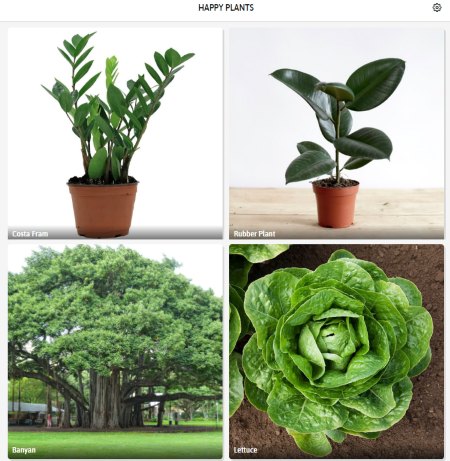
HappyPlants is one if the best free online plant organizer which makes it very easy for you to organize and keep track of your plants. It allows you to add and organize unlimited plants for free. You can name the plants manually, upload images, and then manage their modules. The “Modules” are actually the parameters which can help you keep track of your plants’ individual needs and requirements.
To add a plant, simply click on the “Leaf” button at the bottom and then it will ask you to enter the plant name and upload a photo. After that, you can proceed to add and manage different modules as follows:
- Watering: It helps you define the amount of water your plant requires. You can choose the frequency as daily, semi-weekly, weekly, fortnightly, and monthly. It also lets you choose the amount as just a bit, moderate, and as a lot.
- Sunshine: This can help you define how much sun your plant needs. You can choose the intensity as shade-friendly, partial shade, or full sun.
- Growth: This will let you keep a record of your plant growth. You can know in which seasons is your plant in growth. For example, you can know whether the plant is in the dormant phase, transitioning into a dormant phase, starting to get into active growth, active growth, etc.
- Notes: Using this module, you can add any important and useful notes related to the plant.

This way you can add as many plants as you want and then manage their modules. It ultimately helps in organizing and tracking your plants much easier. You can also add tags to each plant such that you can find them quickly by filtering with tags, change plant view either as grid or list on the homepage, etc. It even has the option to import and export plant data as JSON file.
Plants Map:
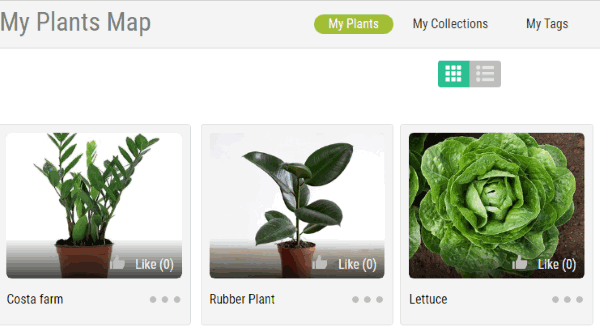
Plants Map is another free online plant organizer that lets you seamlessly organize and keep track of your plants. This one allows you to create your own plant database by adding and organizing as many plants as you want for free. It lets you name the plant anything you want, add a location, upload plant photos, and then proceed to add all the important plant and growth details. This will help you in tracking your plant’s growth with ease.
For adding a plant, simply click on the “My Plants Map” tab at the top and select the “Add Plant” button. After that, you can go ahead and start adding the information about the plant.
Plant Details:
Under the plant details section, it will ask you to enter the following information:
- Plant Information: You would need to enter information like the botanical name, common name, class/type, and choose a category. There are dozens of categories available such as Conifer, Evergreen, Grass, Fruit, Herb, Tropical, Vine, etc.
- Owner Information: It also asks you to enter various information about the owner like accession code, date planted, quantity, current size, reference links, etc.
- Scientific Taxonomic Classification & Identification Fields: You would also need to fill up some scientific taxonomy related files like family, subfamily, tribe, species, variety, cultivar, etc.
Growth Details:
Now, under the growth details section, you can add the following information about your plant:
- Growing Preferences: In this section, you can add information like the sun preference, soil preference, water requirement, native habitat, interior light, pH preferences, and more about the plant.
- Growing Information: Here you can enter different information like the number of days to harvest, seed germination, average size, spacing flower color, foliage info, plant attributes, etc.
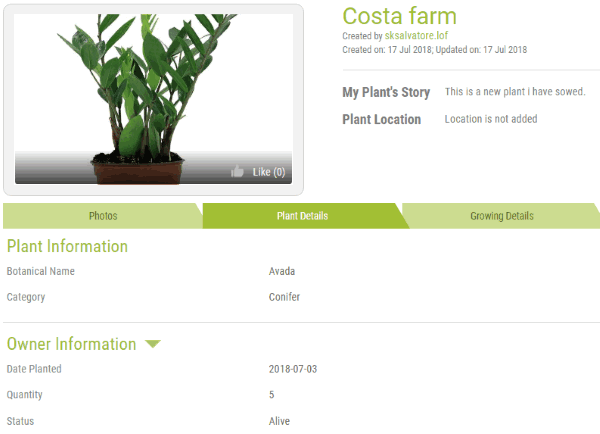
Once you’re done entering these details about your plants, you can easily keep track of their growth and other parameters. To make it much easier for you to organize your plants, it also lets you add notes, create collections, add tags, and more. You can also export your plant’s database as an Excel file.
Folia:
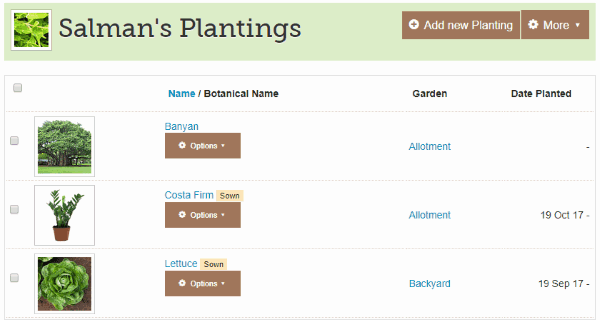
Folia is the last website in this list which can also help you easily organize and keep track of your plants. This plant organizer lets you add and manage unlimited plants absolutely free. You can simply create a plant database by manually adding information like plant name, location, photos, and some other important modules. The free version of this website has certain limitations like you cannot change the number of plants, no automatic photo update, etc.
To get started, you would need to simply open the website and select the “My Planting” option. After that, you can add a plant by clicking on the “Add New Planting” button. At first, it will ask you to give a name to the plant and add a description. After that, you can proceed with adding and managing other parameters including:
- Location: You can easily enter the location of the plant to define where it is sowed. You can manually add gardens and name them whatever you want.
- Category: In the category section, you can select the plant category (like herb, flower, aquatic, moss, etc.), growth category (like a tree, shrub, ground cover, forb, climbing, etc.), and the lifecycle type (like annual, perennial, biennial, evergreen, etc.).
- Upload Photos: This plant organizer allows you to add multiple photos of a plant. You can upload the photos from your Flickr or Photobucket account.
- Tracking Milestones: One of the unique features of this website is the “Milestones”. It allows you to set and track milestones for your plants. To do that, you can simply choose an event (like sown, transplanted, purchased, etc.) and then set the start and end time.
- Classification: It also lets you classify the plants by entering their botanical name, common name, or variety name. To do that, you can simply use the search bar under the “Classification” section.
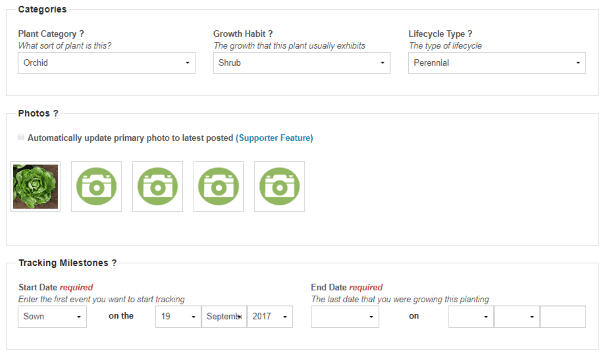
You can also mention the happiness level of planting, plant source, and different settings like whether the plant is available for swap by other users, add to “What Plant is This” page of the website, etc. One of the best features of this plant organizer is that it allows you to add new journals to the added plants. In a journal, you can define the growth status of a plant (like whether it is sprouting, budding, flowering, etc.), current weather, etc. This can help you easily keep track of your plant’s growth and other attributes.
Closing Words:
So, these are some of the best free online plant organizers which can help you easily organize your plants and keep track of their growth. They are very easy to use, as all you gotta do is add plants and start managing and tracking their attributes or modules. What I liked about these websites is the fact that they make it quite simple for anyone who wants to keep a record of plants which he or she sowed or harvested.
Try these plant organizer and let me know what you think in the comments.